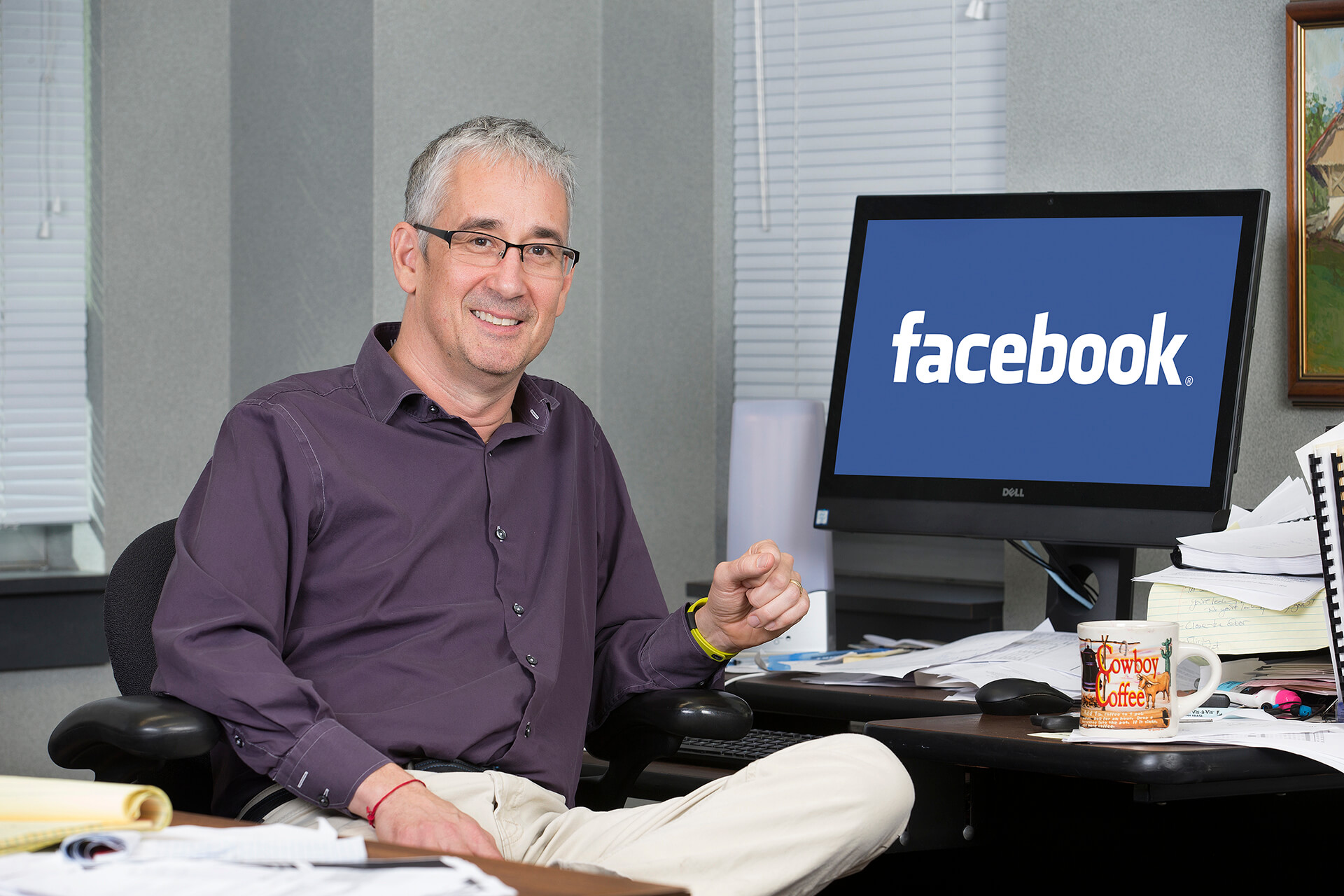

Facebook friends
A two-year study of the Facebook posts about Bowling Green State University’s Department of Psychology yielded some enlightening results that could be helpful to other academic departments in promoting engagement.
Dr. Michael Zickar, department chair, regularly posts for the department; he led the analysis of the analytics from Facebook in addition to a survey of the page’s followers. It was the first empirical evaluation of an academic department Facebook page using both the metrics from Facebook and a user survey. His article, “Using Facebook Pages to Connect with Students, Faculty, Alumni and Friends," was recently published in Teaching of Psychology, a Sage journal.
BGSU has had the most “likes” of any psychology department page among Ohio universities. Zickar wanted to look more deeply to discover some best practices for helping people feel more connected to the department.
“Facebook provides a lot of good metrics about what’s been effective and what wasn’t,” he said.
Using those metrics, he and a team of two graduate students looked at various types of posts, including updates concerning current undergraduates, graduate students, faculty members and alumni; photos, event promotion and posts about general psychology, to determine which were most read and which garnered the most “likes,” shares and comments. He also looked at how many times each post was seen and by how many different people.
“We have a diverse group of audiences,” he said, from current students at every level to alumni and friends of the department to faculty members from other departments. “One size doesn’t fit all content or every post, and different types of content resonated with different groups.”
Faculty will be happy to know that posts about them were the most favored all around, by all groups.
“This shows faculty accomplishments are valued highly by current students and alumni, and that faculty define a particular department,” Zickar said. “Facebook is a good way to celebrate their achievements.”
But faculty were the exception in their across-the-board favored status. All other groups tended to prefer posts about their peers; thus, it becomes important to post a wide range of content. Zickar said it was instructive to find that alumni are relatively less interested in the activities of undergraduates, and undergraduates are less interested in the accomplishments of alumni. This surprised him a bit.
“One size doesn’t fit all content or every post, and different types of content resonated with different groups.”
“I would have thought they would be more interested in seeing ‘what I can do with my degree,’” he said.
Using Facebook to promote event attendance was only moderately successful, and posts with general information about psychology did not resonate with followers.
“If there was no direct BGSU connection, there was no reaction. They want to see the connection,” he said.
The frequency of posts is also important, Zickar said.
“As the administrator of the page, one of the challenges is trying to get regular, interesting content,” he said. “You need to post often enough, about two times a week, I find, so that there’s a rhythm to it and people can find fresh information when they visit. But, of course, this depends on having enough content that’s newsworthy enough to share. Collecting and curating this was a challenge for me, but one thing that helped, in addition to using Google news alerts, was that once we had a number of followers, people began sending me news to share.”
With all the changing trends and other social media platforms that come and go, “there’s no one best way to engage with your audiences,” Zickar said, “but Facebook still seems to be an effective tool for communicating with department students, faculty, alumni and friends. It’s a great way for sharing and magnifying good news. In our busy work lives, it’s nice to be able to slow down and celebrate accomplishments.”
For more information about social media, including Facebook, at BGSU, visit bgsu.edu/socialmedia.
Updated: 02/05/2019 03:15PM
